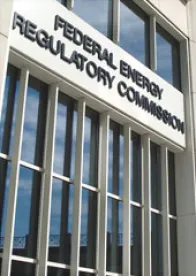Approval of NERC's "Find, Fix & Track" procedure affirms NERC's efforts to streamline the resolution of low-risk Reliability Standard violations.
In a move intended to improve the efficiency of the Reliability Standard violation enforcement process, the Federal Energy Regulatory Commission (FERC or the Commission) yesterday approved the North American Electric Reliability Corporation's (NERC's) "Find, Fix & Track" (FFT) enforcement proposal.[1] The FFT process should provide NERC and the Regional Entities with increased flexibility to address low-risk Reliability Standard violations, avoiding the need for a lengthy settlement process for minor violations that pose little risk to bulk-power system reliability. While NERC will continue to report all violations, this change will eliminate—for those low-risk violations selected for FFT treatment—the extensive mitigation and settlement paperwork that historically accompanied minor violations. Despite this increased flexibility for NERC and the Regional Entities, the Commission promised strict oversight of this process.
Under NERC's proposal, possible Reliability Standard violations will be handled in one of three ways: (1) a traditional Notice of Penalty filing requiring Commission approval; (2) an FFT informational filing with the Commission; or (3) NERC or Regional Entity dismissal. NERC and the Regional Entities will select possible violations for FFT treatment if they pose "lesser risk" to reliability; such violations would typically involve administrative, documentation, and limited maintenance and testing program failures. In making the risk determination, NERC will consider the underlying facts, the Reliability Standard at issue, the relevant violation risk factors (VRFs) and violation severity levels (VSLs), potential and actual reliability risk, and the entity's compliance program and compliance history.
NERC and the Regional Entities will still require that entities fully remediate any violation processed through FFT procedures, but entities need not complete a formal mitigation plan and file reports tracking the plan's completion. Instead, the entity subject to the possible violation must show that it has fixed the violation, describe its mitigating actions, and internally document its implementation for possible later review. NERC will then submit the violations handled through the FFT process, termed "remediated issues," to the Commission in an informational filing.
Violations processed through the FFT procedures cannot involve monetary penalties, but will become part of an entity's compliance history, and therefore could form the basis for a subsequent finding of a repeat violation.
Conditions and Guidance on the FFT Process
The Commission approved this process subject to certain conditions.
FFT Process Only for "Minimal Risk" Violations
The Commission directed NERC and the Regional Entities to allow FFT treatment only for possible violations that pose a "minimal risk" to reliability, rejecting NERC's proposal to also consider certain moderate risk violations. On this issue, the Commission noted that the risk posed by a violation does not depend solely on the adverse impact on bulk-power system reliability during the violation, but instead on the possibility that the violation could have led to a wider issue. The Commission urged NERC and the Regional Entities to consider risk under the "totality of the circumstances," including the protections provided by compliance with other Reliability Standards as well as other actions that mitigated the violation.
FFT Treatment Only when Mitigation Plan Is Completed
The Commission then explained that FFT treatment is not appropriate for addressing an entity's failure to complete the mitigating actions required by an earlier violation that received FFT treatment. If NERC or a Regional Entity discovers that an entity did not mitigate a prior violation when that entity certified those issues as mitigated, the Commission considers this an "abuse" of the FFT process that is "inconsistent with ongoing efforts to improve the culture of compliance." In these instances, the Commission directed NERC and the Regional Entities to treat the violation as a continuing possible violation dating from the start date of the original violation. Under these circumstances FFT treatment is not available.
Appropriate Documentation Required
The Commission explained that the documentation listed in the NERC guidance document "Guidance for Self Reports" reflects the appropriate amount of information NERC must consider when processing a possible violation under the FFT procedure. However, the Commission also directed NERC and the Regional Entities to do the following:
- Require an entity to submit a statement certifying that it has completed remediating the violation
- Consider prior possible violations processed through the FFT procedure as part of an entity's compliance history
- Consider whether the entity self-reported the violation in determining whether FFT treatment is appropriate
The Commission also concluded that because the FFT process represents the closure of a compliance matter and because the disclosure could provide the industry with valuable compliance-related information, the names of entities receiving FFT treatment should be disclosed in NERC's FFT informational filings.
Ongoing Oversight
The Commission disagreed with NERC's proposal to treat compliance matters filed under the FFT process as final, concluding that this was contrary to the Commission's authority to reopen enforcement issues addressed in an FFT filing. However, the Commission did agree that it will consider an FFT matter closed 60 days after the associated FFT informational filing by NERC and will provide notice of its intent to reopen the issue during the 60-day period. The Commission also noted that if an entity received FFT treatment for a violation because that entity materially misrepresented the facts underlying the violation, the Commission reserved the right to reopen the violation even after the 60-day period has passed.
The Commission explained that it will survey random samples of the FFTs filed every year to determine if the FFT program is increasing enforcement efficiency and if NERC and the Regional Entities are acting in a manner consistent with the Commission's approach on this issue. In the event that the Commission decides to provide additional guidance on the FFT process based on these reviews, the Commission committed to adopting such guidance only prospectively.
The Commission directed NERC to make a compliance filing within 60 days of its order to explain how NERC and the Regional Entities will evaluate an entity's compliance history in the FFT process, including how that compliance history will affect whether FFT treatment is applied to a violation. In addition, NERC must include in the 60-day filing a report addressing its experience in the FFT process to date and must filed a similar report in one year. The Commission will rely on these reports to judge the effectiveness of the FFT program.
Finally, in response to NERC's explanation that many Reliability Standard violations pose little reliability risk, the Commission urged NERC to identify whether it is possible to remove or revise certain Reliability Standard Requirements without harming reliability. The Commission expressed its openness to hearing from NERC, the Regional Entities, and other parties on how unnecessary or redundant Reliability Standard Requirements can be identified and removed.
[1]. See Order Accepting with Conditions the Electric Reliability Organization's Petition Requesting Approval of New Enforcement Mechanisms and Requiring Compliance Filing, 138 FERC ¶ 61,193 (Mar. 15, 2012), available online at http://www.ferc.gov/whats-new/comm-meet/2012/031512/E-3.pdf.





 />i
/>i

